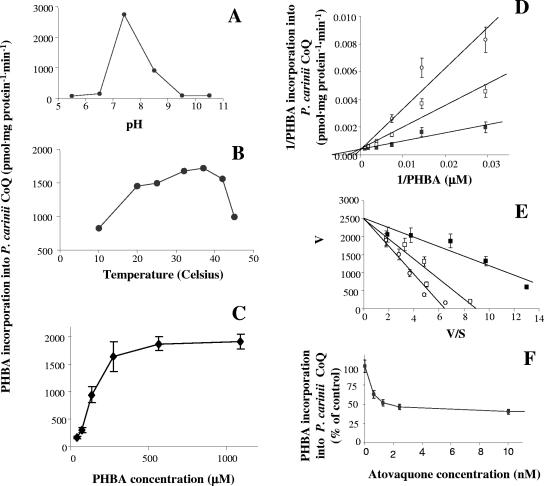FIG. 3.
Characterizations of [U-14C]PHBA incorporation into CoQ using P. carinii whole-cell homogenates. Effects of pH and temperature on the incorporation in vitro of [U-14C]PHBA into P. carinii ubiquinones using whole-cell homogenates are shown. A. Effects of pH. Optimal pH was detected at pH 7.5. B. Effects of temperature. Incorporation was observed over a broad temperature range; optimal temperature was 37°C, which sharply declined at temperatures higher than 40°C. There was relatively high activity at 20°C, which is the optimal growth temperature reported for in vitro axenic cultivation of the organism (43). C. First-order kinetics was exhibited with increased substrate concentration. Values are means ± SEM; n = 4 separate experiments. D. Effects of atovaquone, shown in a double reciprocal plot demonstrating competitive inhibition. Filled squares, without atovaquone; open squares, with 2 nM atovaquone; open circles, with 10 nM atovaquone. Values are means ± SEM; n = 3 separate experiments. E. Eadie-Hofstee representation of the data shown in panel D, verifying competitive inhibition kinetics of atovaquone on the incorporation of PHBA into P. carinii ubiquinones. F. Maximal inhibition attained with atovaquone was 60% of untreated controls (40% inhibition); no further inhibition was observed at concentrations up to 10 μM. Values represent means ± SEM; n = 4.

